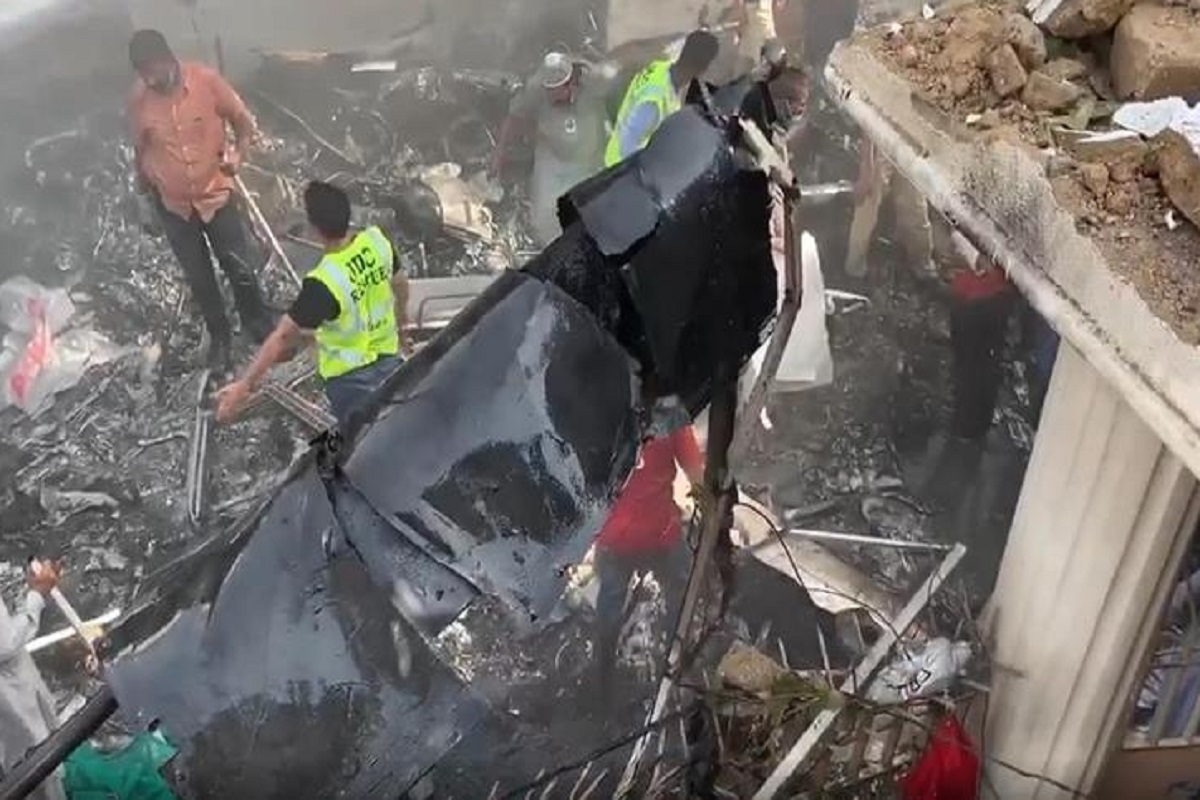BCCI flags PCB’s plans of CT 2025 trophy tour to POK
The Trophy Tour is part of the global body’s promotional campaign, involving visits to multiple cities as per discussions between the international body and the host country.
A day after the incident, the Civil Aviation Authority (CAA) had notified an investigation team headed by its Aircraft Accident and Investigation Board (AAIB) President Air Commodore Usman Ghani

PIA Plane Crashed in Karachi (Photo: IANS)
A month after Pakistan International Airlines (PIA) was crashed near Karachi, a probe report has said that plane crash took place due to human error, the negligence of both the cockpit crew as well as the air control tower, and not because of any technical fault.
There was apparently no technical fault in the aircraft, said the preliminary investigation report submitted to the Aviation Division in a high level meeting on Monday, The Express Tribune reported
On May 22, the PIA A320 plane, en route from Lahore, crashed in Karachi’s densely populated Model Colony area near the city’s airport that left 97 passengers dead.
Advertisement
The aircraft wings during the crash landing hit the houses in the residential colony before crashing down.
The plane with 99 people on board came for landing but just before landing the pilot said he was going for a go-around. While coming for a second landing, it developed some problems and crashed.
A day after the incident, the Civil Aviation Authority (CAA) had notified an investigation team headed by its Aircraft Accident and Investigation Board (AAIB) President Air Commodore Usman Ghani.
The team was ordered to submit its preliminary report on June 22.
On Monday, Air Commodore Ghani gave a detailed briefing to the Aviation Division officials.
According to the report, the CAA officials, the cockpit crew, the control tower and the air traffic control repeatedly made mistakes. Sources privy to the document said the aircraft’s black box has so far not indicated the possibility of any technical fault.
The report said both the speed and the altitude of the aircraft was more than the recommended parameters when the pilot tried first landing.
The control tower permitted landing despite greater speed and altitude. The air traffic control also did not provide the control tower with the radio frequency.
The pilot also did not inform the control tower about jamming of the landing gears. It was a wrong decision on part of the pilot to attempt a second landing.
The plane stayed in the air for 17 minutes after the first landing attempt, a crucial time during which both the engines of the aircraft failed.
Earlier this month, CAA official Iftikhar Ahmed had released a letter to the PIA safety and quality assurance department, while pointing out “non-compliance of ATC instructions” by PK-8303 and asked him to “ensure avoidance of recurrence of such situation in the interest of flight safety”.
The letter said that PK-8303 was cleared to an altitude of 3,000 feet while entering the control zone that is 25 nautical miles (NM), but the aircraft was spotted at a high altitude of over 5,000 feet over Makli.
Earlier on Monday, Minister for Civil Aviation Ghulam Sarwar Khan told the National Assembly that the interim report on the plane crash will be presented in the National Assembly on Wednesday.
However, earlier a question arises as to why the approach tower did not transfer the aircraft to Karachi tower, which could have physically seen if the landing gears were down or not when the pilot came in for first landing.
The flight was coming from Lahore to Karachi after the Civil Aviation Authority (CAA) allowed limited resumption of domestic flights last month following weeks of lockdown due to the coronavirus pandemic.
(With inputs from agency)
Advertisement